Nothing but advantages: why do many people choose a cast iron fireplace stove for their home and garden?
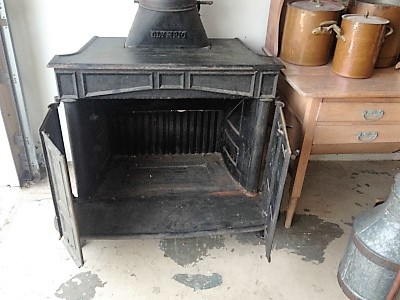
Cast iron is a metal with special properties. It is quite strong, yet fragile. Withstands high temperatures, is not subject to oxidation.
It heats up quickly and gives off heat to the body for a long time. This makes it good raw materials for heating devices: stoves and fireplaces.
Another feature of cast iron is complexity of technological processes. Therefore, products made from it are created only by casting on professional equipment, and not independently at home.
Content
Advantages of cast iron fireplace stoves
The popularity of these stoves is due to their advantages compared to brick and steel analogues. Such fireplaces are easy to install, heat up quickly and give off heat for a long time. They also have other advantages.
Cost of stove and fuel
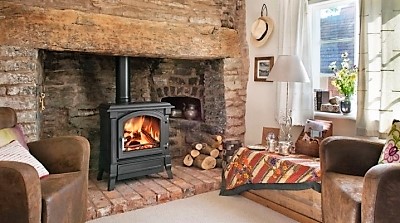
Buying a cast iron stove, even with delivery and installation, will cost significantly less than building a brick one. Gain in price May be up to 15 - 20 times.
Firewood belongs to inexpensive types of fuel. Since there are no special requirements for their properties in this case, it is possible to use various types of wood for cain.
Although the quality to a certain extent affects the power, the fireplace will work and on the most budget options.
Important! In addition, fuel is additionally is being saved due to the faster heating of the oven.
Easy to install
When constructing a brick oven, the skills and abilities of a stove master, strict adherence to the order of the order, etc. are required. Cast iron fireplaces are produced in series. It is enough to simply choose the appropriate model based on its characteristics and appearance.
Since a cast iron stove is much lighter than a brick one, there is no need to build a separate foundation. It is enough to install a protective screen on the floor (and the wall, if the device is installed close) and connect the chimney. After that, the fireplace is ready for operation.
Heating efficiency, long cooling time
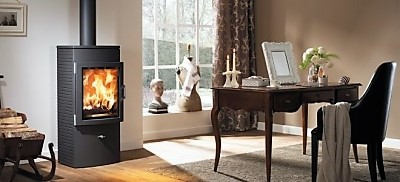
Cast iron heats up faster brick. That is why a stove made of it begins to give off heat much earlier.
Such fireplaces are good Suitable for buildings that are heated periodically. These include summer houses where people do not live permanently in winter, utility rooms, etc.
Furnace body gives off heat for a long time after the firewood has burned out. This increases the period between fireboxes with constant use, saving fuel.
Environmentally friendly and corrosion resistant
This property is ensured two factors:
- Eco-friendly and safe the material itself furnaces (an alloy of iron and carbon with the addition of graphite).
- Burnable wood does not emit harmful substances.
Cast iron is characterized by ttemperature and chemical resistance. It tolerates multiple heatings well. If acidic condensate appears from poor-quality firewood or improper combustion, the surface of the fireplace is not damaged. Stoves made of this material last a long time, up to 50 years.
Construction of a cast iron fireplace

The design elements are cast in production and are fastened with a special heat-resistant sealantSome models have a firebox covered with ceramic tiles on top.
Main parts The furnaces are as follows (from bottom to top):
- support legs;
- ash pan;
- grate;
- combustion chamber;
- chimney.
Additionally, the ovens are equipped with oven, hotplates, water heating tank etc.
The combustion of fuel occurs in the combustion chamber. It is separated by a grate from the ash pan, where the ash falls.
By slightly opening the ash pan cover, the flow of fresh air is regulated. Sometimes, for precise adjustment, dampers, built into the firebox or ash pan door.
The flue gases then exit through chimney fireplace. It is desirable install vertically or at an angle. Horizontal sections are not allowed, as there is a risk of combustion products returning to the room and carbon monoxide poisoning. General pipe height — not less than three meters.
Reference. For the combustion process the presence of oxygen is required. And the more of this gas, the faster it happens. For a slow and more effective burning of firewood, the air flow into the stove is limited.
Features of a long burning stove
For longer and more efficient heating, long burning technology is used. One bookmark With such a device, there is enough firewood for the fireplace up to six or even eight hours continuous heat generation.
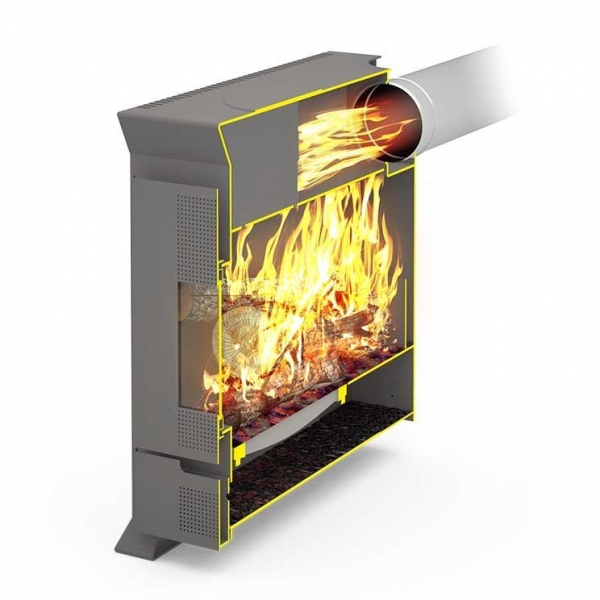
Photo 1. The design of a long-burning fireplace: a secondary combustion chamber is located above the firebox.
When wood is burned, it produces pyrolysis gases. They are also capable of burning, and this property is used in long-burning heaters. Above the firebox there is another chamber, separated by a grate - secondary combustionSometimes there is an additional hole for air flow.
Recommendations for choosing a stove
To choose the fireplace that is best suited to your specific conditions, take into account a number of factorsIt is important to know the dimensions of the room. It matters what period of operation is required, what other functions will be required, what fuel will be used. Even the exterior of the stove influences the choice.
Area of the heated room
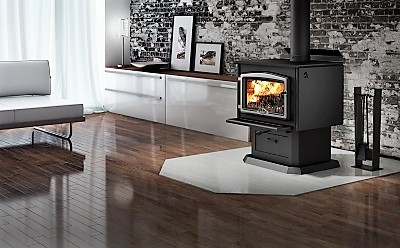
Fireplaces have various shapes and sizes, and therefore installation is carried out in a room of almost any size (taking into account the distances required for fire safety).
For small spaces, products that can be installed are selected against a wall or in a corner. These stoves have one door with a glass insert, which can have one or two flaps. Corner models take up less space, and therefore are suitable even for very small rooms.
If the room size allows, a fireplace will look good. with two or three glass walls or a panoramic viewThe last option is placed in the center, and you can admire the flame from any point.
Important! Also depends on the size of the building The power of the fireplace also depends. It needs to be selected correctly for high-quality heating.
Additional functions
If necessary, the fireplace serves not only to heat the room in which it is located. If you connect heat tank, water heating will also heat other rooms, including those on the upper floors.
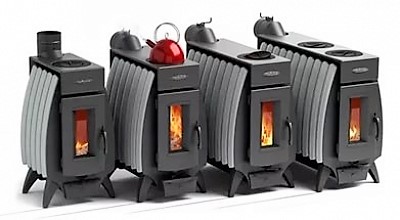
For this purpose, the following are also used: air ducts, which are easier and cheaper to install. But they can only be used to heat adjacent rooms.
Ovens are also used for cooking. The design provides for this one or two burners. Often present and oven.
Each of these options complicates the design, and the cost of the fireplace increasesFor this reason, it is recommended to think about what exactly is required from the stove, as well as how often it will be used.
Power
This indicator determines what volume the oven can heat. If the thermal insulation is done properly, it is enough 1 kW for 20-25 cubic meters. Sometimes the power is selected with a small reserve in case of severe frosts. But more than 15 - 20% There is no need to add more, otherwise the room will overheat.
Attention! For precise figures, do the necessary calculation that takes into account heat loss. Quite often, a lot of it escapes through windows and doors. Therefore, with panoramic glazing, a furnace with a higher power will be needed.
Continuous operation period
In this case, the use of the oven is important. If this main heating device in the house, a fireplace would be suitable long burning. Such a device can be simply lit in the evening, and you won’t have to get up at night to add firewood.
The upper wall of the firebox heats up less due to the double combustion technology. The burners located on it, will not be able to boil water or cook food. This means you will have to choose between the heating duration and the cooking function.
Fuel type
Most often, fireplaces are lit using firewood. But there are models designed for fuel briquettes or pellets. This characteristic is usually included in the description.
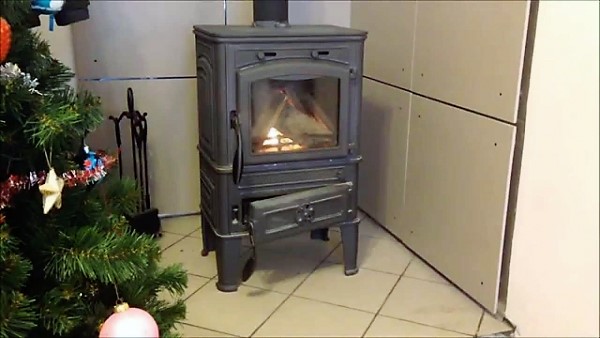
Photo 2. The Lava cast iron fireplace from the manufacturer Guca can operate on wood, briquettes and brown coal.
Exterior of the stove
It is desirable to bake matched the style of the entire room. But when choosing, you should focus not only on this. For example, corner or vertical models are suitable for small rooms. There are, on the contrary, fireplaces that are installed only in spacious rooms - for example, panoramic view.
Useful video
The video shows the appearance of the cast iron stove Supra Ulysse, the process of its installation and kindling.
Where can a cast iron fireplace be used?
This efficient, durable and environmentally friendly devices. They are used in houses for permanent residence or on dachas, as a primary or additional source of heat. An important advantage is that the fireplace does not require any heating no electricity or gas required. This means that the stove is also suitable for areas where there are no centralized communications or where there are interruptions in them.







Comments
The option of using a cast iron fireplace seems to me to be better here, because it is enough to attach a heat exchanger to it and connect it to the heating system, firewood is still purchased for a bathhouse, and in emergency cases for a fireplace there is not much of it. Moreover, this system is much simpler, and the generator and D, V, C, can fail. So, it turns out that a fireplace, especially a cast iron one, as an additional source of heating for a house is the best option.